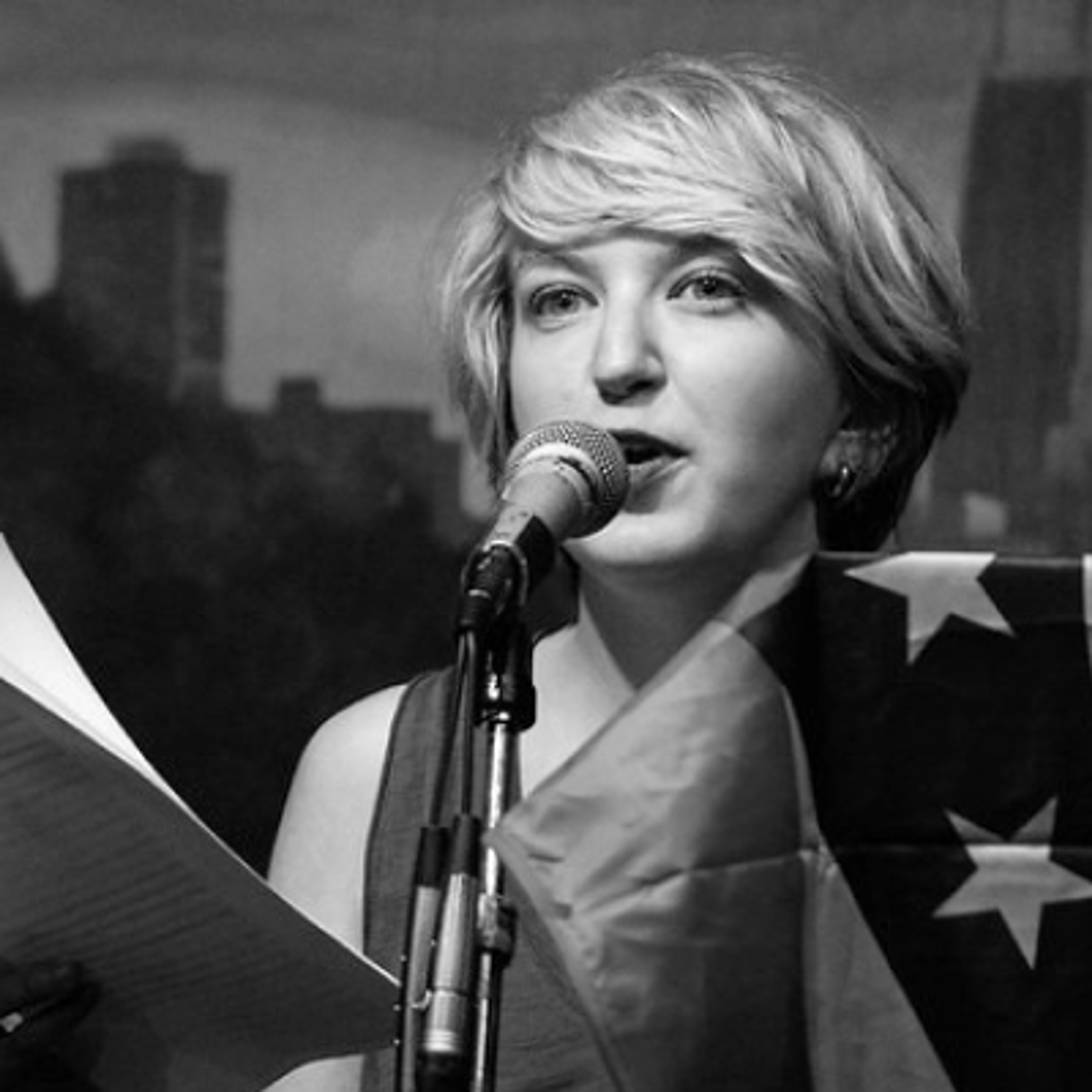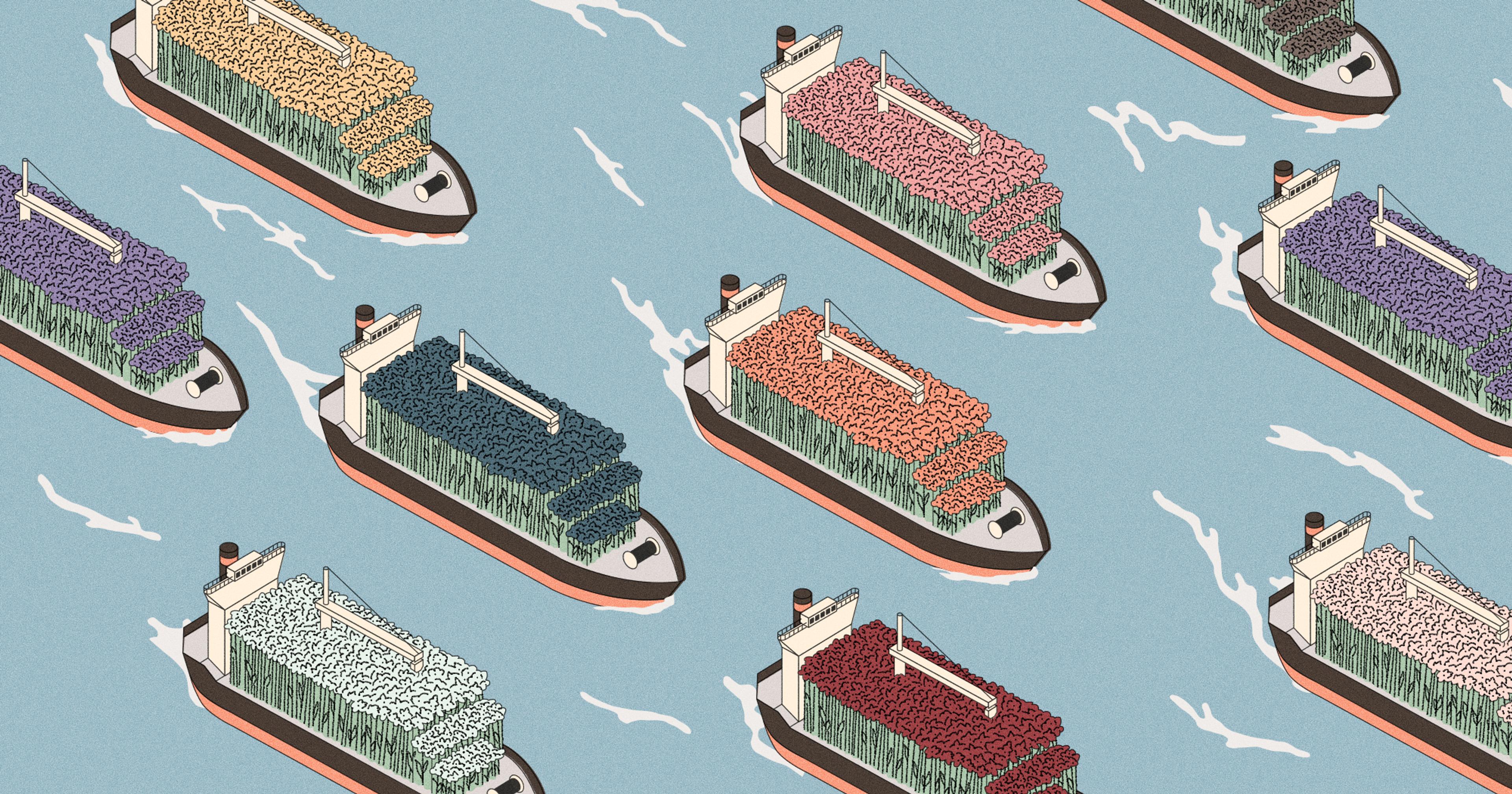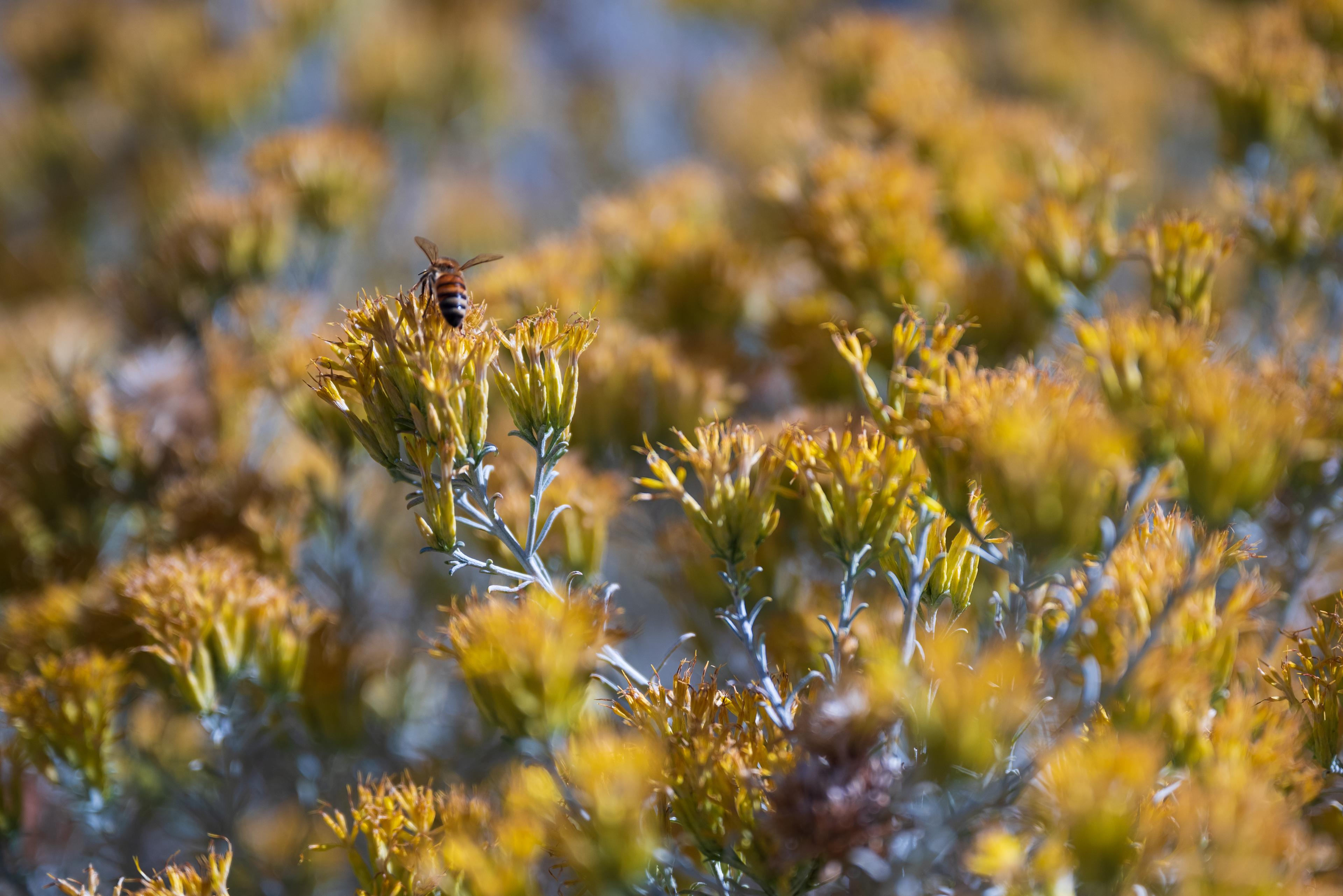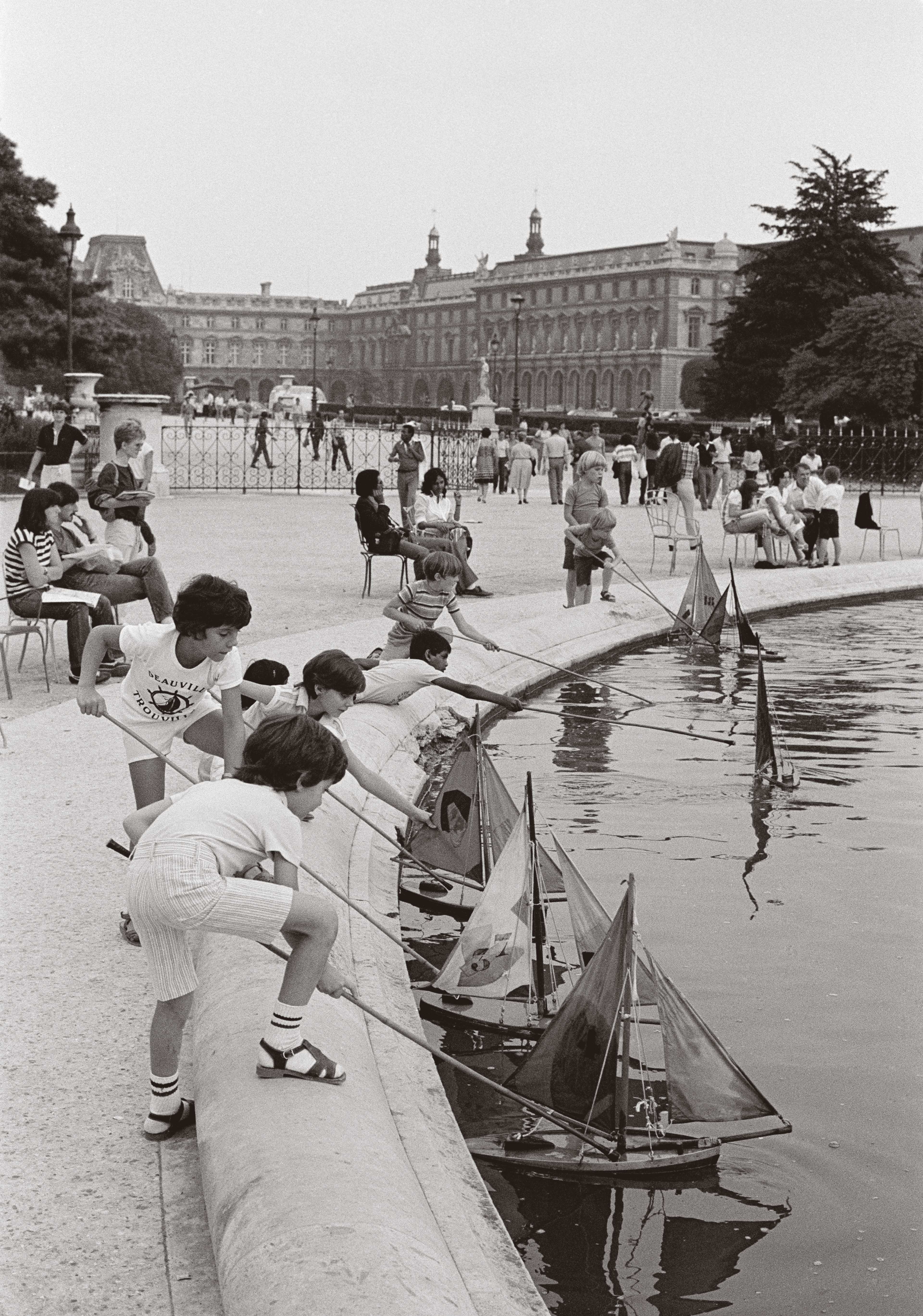Cheap foreign imports will always beat local flower growers on price — what else can they offer?
As summer turns to fall, Lauren Catey Dillon is thinking about love. Specifically, weddings — the small flower farmer rents out her barn for events year-round. This helps support her family through Indiana winters, when the dahlias and the sunflowers slumber under frost. Selling cut flowers to florists is just one part of Dillon and her husband’s income: They also create floral designs for events, run DIY flower workshops, sell bulk buckets of flowers, manage CSA subscriptions, and run a farmstand two days a week. In addition to the farm, they both work at nearby Ivy Tech Community College; her husband Jem is an adjunct philosophy professor and a success coach, helping first-generation college students navigate the education system.
Although flower farming can seem dreamy, something out of the romantasy novels Dillon reads in the spare hours between multiple jobs and co-parenting their toddler Imogene, the reality is that flowers alone cannot sustain their modest lifestyle. Sales of cut flowers in Indiana totaled $461,000 last year, about 15% of what the CEO of 1-800-FLOWERS earns annually — an extremely slim slice of that is the Dillons.
They make it work because they love it: the land, the relationships with customers, the opportunity to give something back to their community. But it’s not just love that pays their bills and allows for the occasional trip to Main Street Market for soda combos like Strawberry Shortcake (vanilla, strawberry, and Sprite). For their business to stay viable, they need people to buy local — to choose the less convenient, more personal, arguably more beautiful option.
The Root of the Problem
The financial situation for Lauren and Jem’s farm, Catey Heritage, was set into motion not long after they were born; in 1991, the United States government enacted the Andean Trade Preference Act, offering trade benefits to help Bolivia, Colombia, Ecuador, and Peru transition from drug production to legitimate industries. This meant that flowers could be imported to the United States tax-free; the hope was that farmers would stop growing the coca leaves and poppies used to make cocaine and opium. The Act’s effectiveness in eradicating drug crops is an ongoing discussion, but what it meant for the flower industry was definite: Eliminating tariffs on imported flowers was a blow for domestic growers. They could no longer compete on cost, and imported flowers became and stayed the norm.
One would not be amiss in wondering what came first, supply or demand; the list of occasions on Teleflora’s website requires a long scroll, suggesting that flowers are standard for everything from back-to-school to Women’s Equality Day. However we got here, the reality is that people can get flowers easily and relatively cheaply. And they do: Americans buy an estimated 10 million cut flowers every day, with floriculture sales across all retail outlets reported at $6.43 billion. The vast majority of these flowers are imported: When you’re picking up a dozen roses at Trader Joe’s or ordering a funeral arrangement from Teleflora, it was probably shipped from another continent. But an increasing number of bouquets come from outfits like Catey Heritage Farm — the number of domestic floriculture producers totaled 10,216 last year, compared to 8,949 in 2022.
For Lauren Catey Dillon, farming was a chance to get back to her farming roots and their mutual passion for the work. Her favorite part of teaching kids in Chicago was being in nature with them. It was in Chicago that she met Jem, who had worked on an organic farm outside of the city and was down for an adventure.
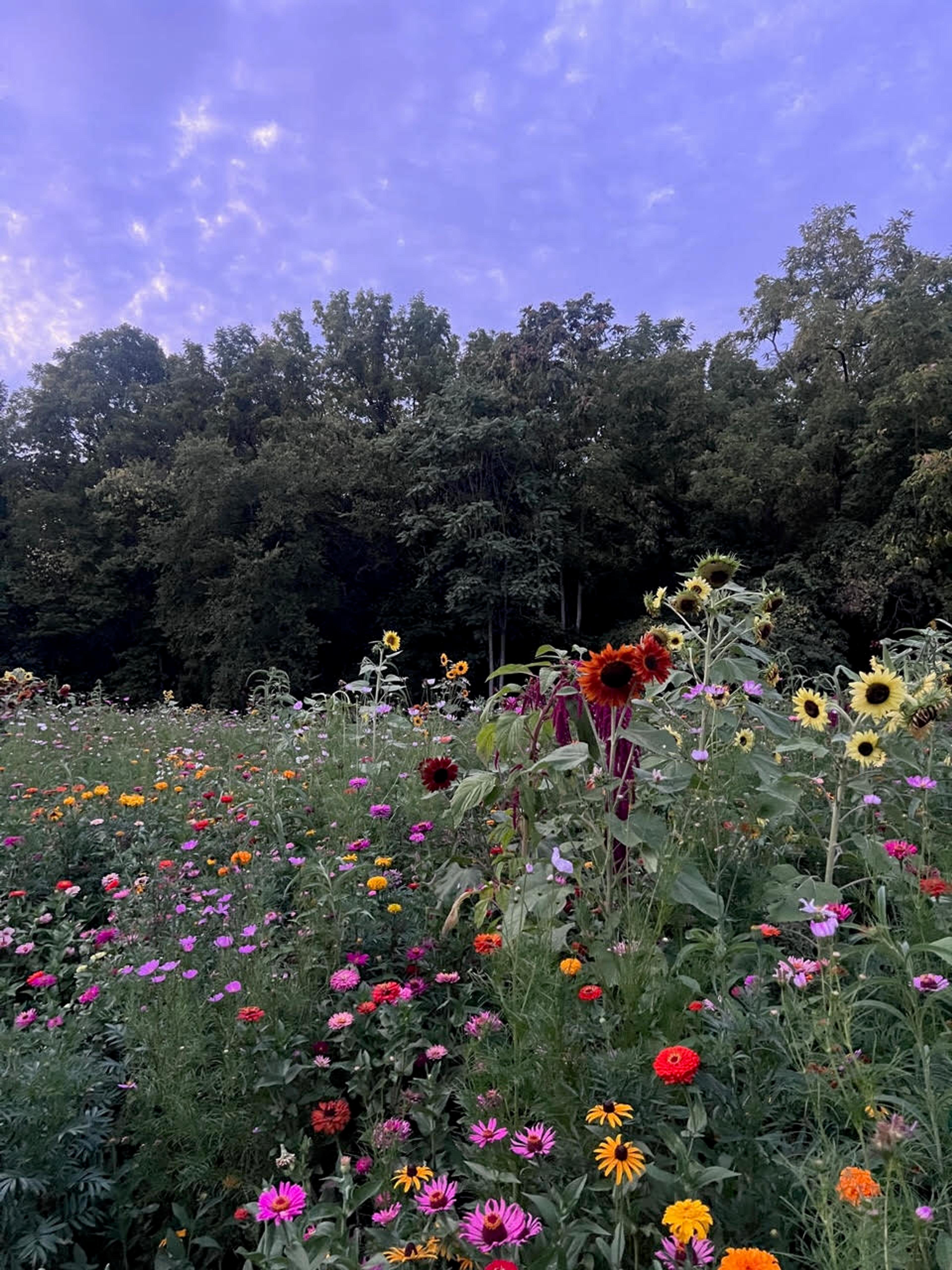
A field of flowers at Catey Heritage Farm
·Photo by Lauren Catey Dillon
Passion was part of Isabelle Barron’s decision to pursue flower farming as well. The farmer and artist behind Fairy Meadow Flowers fell in love with gardening while creating colorful planters for her grandmother, providing something beautiful to look at during her struggle with Alzheimer’s. From Barron’s three-quarters of an acre in Connecticut, they grow vibrant hibiscus and hollyhocks without tilling or chemicals; they also create floral designs for events. Similarly, Kate Farrar grew up gardening and worked for over a decade in local agriculture before opening Foxtrot Farms in 2021. Foxtrot is a regenerative flower farm and studio in upstate New York that offers stunning, fiery arrangements well into autumn.
Hand in hand with the heart these farmers put into their work are the struggles. Domestic flower farmers are not a monolith, but regardless of size they have some shared challenges. Though the demand for flowers always exists, they cannot meet it; small-scale farmers don’t always have the capital to expand, or operate year-round. And many can’t provide the same endless, diner menu variety of blooms: Dillon noted that without paying a tremendous amount heating hoop houses with gas or forcing tulips, there’s no way in the Midwest to have things bloom throughout the winter.
And unlike the farms where we get most of our roses, the farmers I talked to take ethics into consideration — environmental impact and quality of life (theirs and their employees, if they had them) were key factors. Dillon knows firsthand the effects of using chemicals: When she worked at a local florist that used domestic flowers, she developed contact dermatitis. She won’t use them, and because of this must do more weeding to keep unwanted plants from choking her zinnias.
Meanwhile, Barron was matter-of-fact about the trade-offs they make: “The reason I won’t ever be as profitable as a corporation is because I pay my workers well.” Farrar echoed Barron’s sentiment: “[Imported] flowers are not the real cost of doing business fairly. Some customers … are happy to pay a fair price for the fruits of our labor, but there are other customers who have the global industrial agricultural price ingrained in their brain and are offended by my living wage pricing.” Taking into account what happens to the earth and its people means more effort and less profit.
Flourishing Amidst Everything
What do consumers get when they give up some convenience and pay a little more? A lot, both tangible and otherwise. Local flowers can mean fresher flowers, more artistic and unique arrangements, and a relationship with someone who knows what you like and will work with your vision. It also means flowers that are more likely to be grown in a way that respects humans and the planet. Dillon gets why people pick up grocery store roses, and is sympathetic — she’s the first to admit she doesn’t always make sustainable choices.
Although she’ll occasionally choose Taco Bell over homegrown vegetables, she’s trying to practice what she preaches as much as possible, working with other flower farmers in the region when a customer’s needs go beyond what she can provide: “If I need more flowers for a wedding, instead of calling up the wholesaler and having them send me flowers that came from South America, why don’t I just reach out to my farmer who lives 20 minutes away, find out what she has in the color palette, and go support her?”
Dillon, Barron, and Farrar have an ally in Debra Prinzing, who wants to make buying domestic flowers easier. The author of Slow Flowers: Four Seasons of Locally Grown Bouquets from the Garden, Meadow and Farm is also the creator of Slow Flowers, a free online directory for people who want to buy domestically sourced flowers. It features over 700 farmers and florists who supply local and seasonal flowers. If you can’t find domestically grown flowers through Slow Flowers, you can also Google [flower farm] + [your city], or make inquiries at your local farmer’s market.
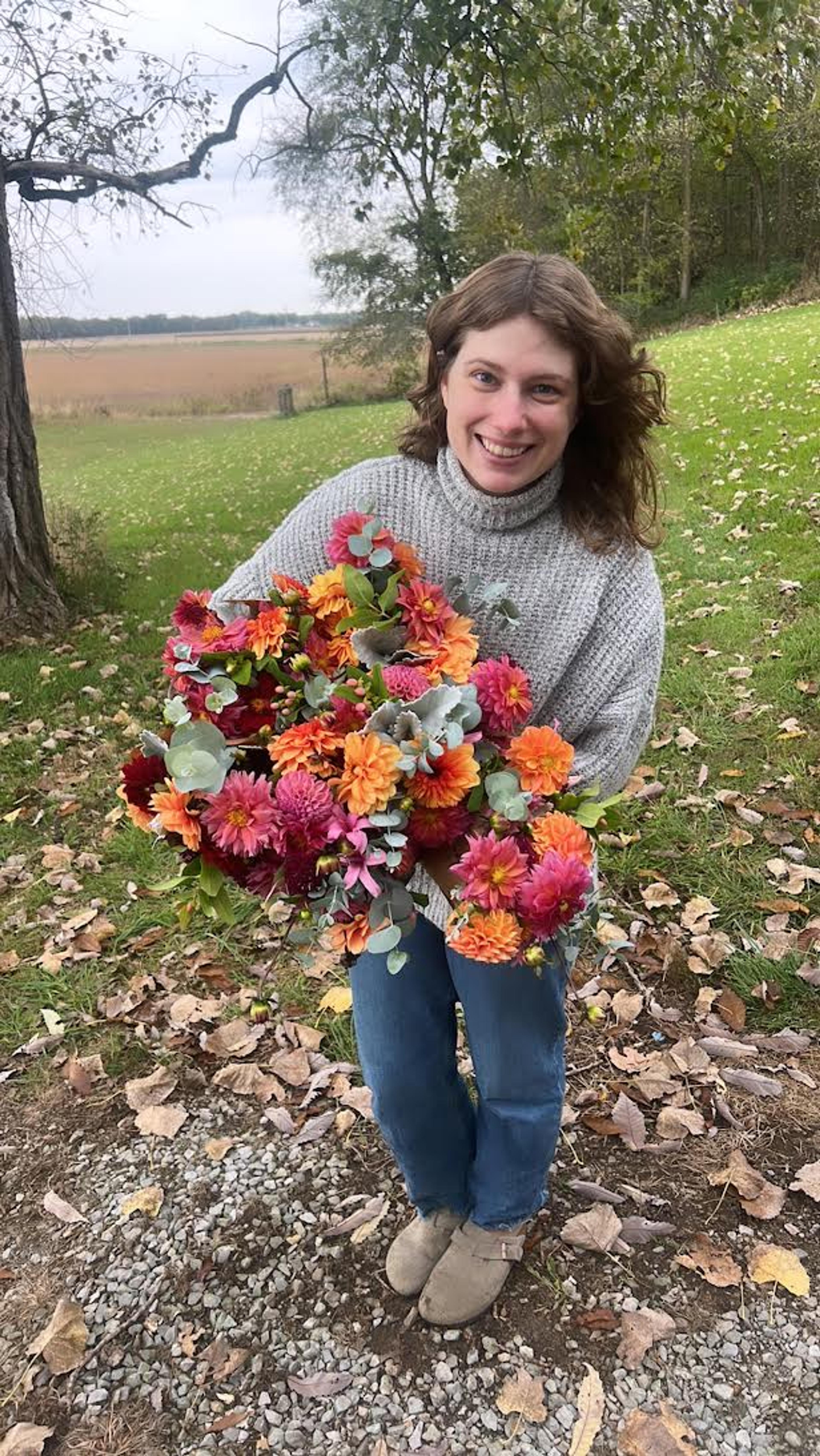
Lauren Catey Dillon on the Catey Heritage grounds.
·Photo by Jem Dillon
Prinzing is realistic but hopeful about the future: “Imported flowers will not ever disappear from our floral landscape. The industry is too deeply reliant upon the pricing model of low-cost, volume flowers produced offshore.” She knows that garish arrangements like Teleflora’s Bee Well bouquet are not going away anytime soon, but she also sees a definite movement in a more sustainable direction. Slow Flowers partners with the National Gardening Survey to assess consumers’ attitudes and behavior around local flowers; an increasing number of respondents state that it is very or somewhat important that the flowers they purchase are local or at least American-grown. Most importantly, consumer spending habits echo this change of heart: domestic cut flower sales have increased $90 million since 2017.
Last year’s National Gardening Survey also offers clues as to why the money is moving: When consumers were asked to rank the importance of buying local and domestic flowers and floral arrangements, the top answers were “Helping family-owned flower farms to keep jobs in my region” or “Backing my community’s economic growth.” Why these answers were prioritized over those like “Minimizing the carbon footprint of moving perishable products like flowers” isn’t clear, but perhaps it’s because climate change can seem abstract, while buying locally is tangible and immediate.
Whatever their reasons, more and more people are willing to invest effort, money, and trust into a beautiful present and a more humane, collectivist future. Prinzing believes that the needle will continue to move, with just a shift in mindset: “Our florists highlight the sustainable benefits of sourcing in-season flowers. That means you might have a different-looking floral arrangement in December in Chicago,” she said. “The Slow Flowers philosophy aims to redefine ‘beauty’ as different than having any flower, any time, all year long.”
